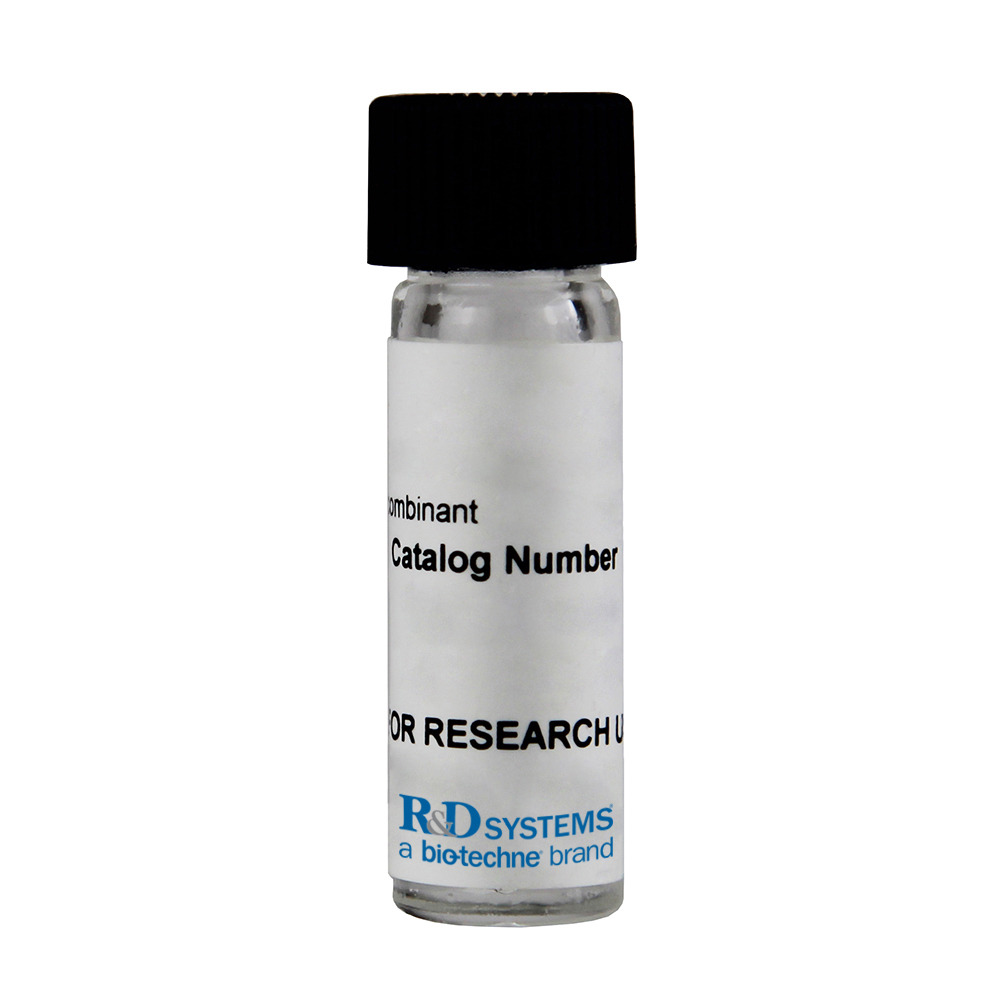Recombinant Human ErbB4/Her4 Fc Chimera Protein, CF
R&D Systems, part of Bio-Techne | Catalog # 1131-ER

Key Product Details
Source
Accession #
Structure / Form
Conjugate
Applications
Product Specifications
Source
| Human ErbB4 (Gln26-Arg649) Accession # Q15303 |
IEGRMD | Human IgG1 (Pro100-Lys330) |
6-His tag |
| N-terminus | C-terminus | ||
Purity
Endotoxin Level
N-terminal Sequence Analysis
Predicted Molecular Mass
SDS-PAGE
Activity
The ED50 for this effect is 1.5-6 µg/mL in the presence of 10 ng/mL of Recombinant Human NRG1-beta 1/HRG1-beta 1 Extracellular Domain (Catalog # 377-HB).
Formulation, Preparation and Storage
1131-ER
| Formulation | Lyophilized from a 0.2 μm filtered solution in PBS. |
| Reconstitution |
Reconstitute at 100 μg/mL in sterile PBS.
|
| Shipping | The product is shipped at ambient temperature. Upon receipt, store it immediately at the temperature recommended below. |
| Stability & Storage | Use a manual defrost freezer and avoid repeated freeze-thaw cycles.
|
Background: ErbB4/Her4
ErbB4, also called Her4 (human epidermal growth factor receptor 4), is a type I membrane glycoprotein that is a member of the ErbB family of tyrosine kinase receptors. ErbB family members serve as receptors for the epidermal growth factor (EGF) family of growth factors. ErbB4 is expressed in normal skeletal muscle, heart, pituitary, brain and several breast carcinomas. ErbB4 ligands include the neuregulins, beta-cellulin and heparin-binding EGF-like growth factor (HB-EGF). Monomeric ErbB4 binds its ligands with low affinity. Typically, heterodimerization with ErbB2 forms the high affinity receptor complex. However, ErbB4 has also been shown to heterodimerize with both ErbB1 and ErbB3. It has been suggested that the identity of the ligand may influence the dimerization partner. Because ErbB3 contains a defective kinase domain, the kinase domain of ErbB2 is responsible for initiating the tyrosine phosphorylation signal through the heterodimeric receptor. It has been found that a discrete three amino acid signal in the ErbB3 cytoplasmic domain is critical for transactivation of ErbB2. Interestingly, this same three amino acid signal has been found in ErbB4 and ErbB1 (EGFR). Several ErbB4 isoforms exist. Two of these differ in the presence of juxtamembrane extracellular sequences which regulate the ability of TACE (TNF-alpha converting enzyme) to proteolytically cleave ErbB4 from the cell surface. These isoforms exhibit tissue-specific expression. Another isoform lacks the phosphoinositide 3-kinase activation sequence present in the ErbB4 cytoplasmic domain. Human ErbB4 consists of 1308 amino acids (aa) with a 25 aa signal sequence, a 626 aa extracellular domain, a 24 aa transmembrane region, and a 633 aa cytoplasmic domain. ErbB4 appears to play important roles in neuronal development, development of the heart and cancer.
References
- Plowman, G.D. et al. (1993) Proc. Natl. Acad. Sci. USA 90:1746.
- Elenius, K. et al. (1997) J. Biol. Chem. 272:26761.
- Elenius, K. et al. (1999) Oncogene 18:2607.
- Rio, C. et al. (2000) J. Biol. Chem. 275:10379.
- Emkey, R. and C.R. Kahn (1997) J. Biol. Chem. 272:31172.
- Sundaresan, S. et al. (1998) Endocrinology 139:4756.
- Schaefer, G. et al. (1999) J. Biol. Chem. 274:859.
- Schlessinger, J. (2000) Cell 103:211.
- Daly, R.J. (1999) Growth Factors 16:255.
Long Name
Alternate Names
Gene Symbol
UniProt
Additional ErbB4/Her4 Products
Product Documents for Recombinant Human ErbB4/Her4 Fc Chimera Protein, CF
Product Specific Notices for Recombinant Human ErbB4/Her4 Fc Chimera Protein, CF
For research use only
